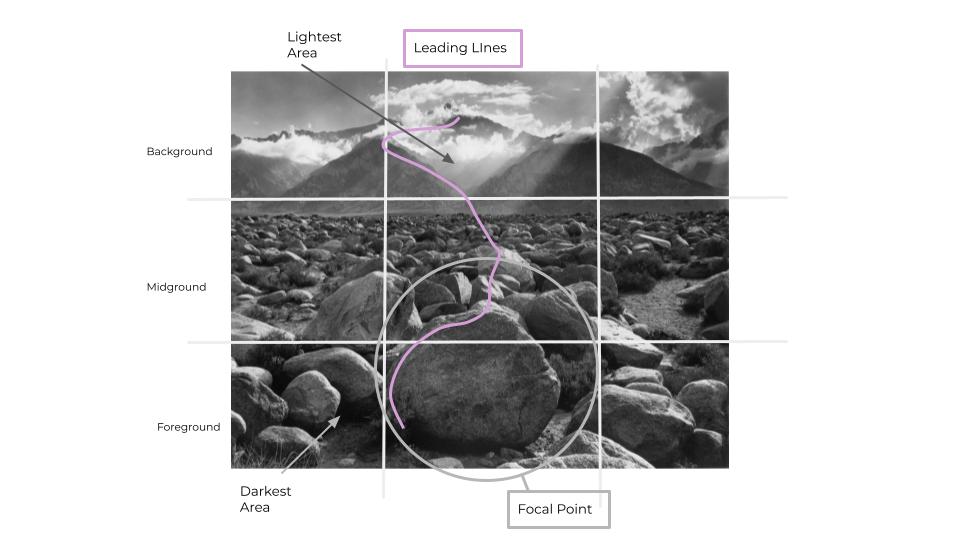
Ansel Adams was an American photographer, born February 20, 1902 in California and died April 22 in 1984. He was an environmentalist, who photographed natural parks. He did this to raise awareness for preserving nature. His photos have lot of depth and shadows, creating an overwhelming feeling for the viewer. I would say some of his photos comply with the sublime.

This photo of Ansel’s has a strong foreground that’s creates a large focal point for the whole of the image. It naturally leads your eyes to that point, but then the leading lines follow to the back of the image and up to the mountains. This occurs throughout Ansel’s work , where he strategically makes the mise-en-scene lead your eyes from the foreground to the background. This photo has a large depth of field because the whole image is in focus. This means he would have used a small aperture and a long shutter so he managed to capture the light. The shadows are intense, especially in the top right third, where the clouds have depth. He would have had to wait for the right time where the sun was shining through the cloud in the centre to get this well composed image. He has used the rule of thirds, as the focal point is in the middle third and the two mountains line up perfectly with the right and left third line.
Ansel used the Pocket Kodak with a 4 x 5 view and the Zeiss Milliflex.

Ansel created a zone system so when he was taking his photos he could get a wide range of light from bright to dark, to make sue his images had high contrast between darks and lights.


Here Ansel took two different photos, one with a yellow filter (right0 and one with a red (left). He recognised that using a yellow filter wouldn’t create as much darkness and shadows. This influenced him to use a red filter which turns the blue sky darker in black and white. Overall, it creates a much deeper image.
Group f/64

Ansel was part of The Group f/64, which stood for the small aperture setting that gave a large depth of field. The group also consisted of some famous photographers at the time such as Van Dyke, Imogen Cunningham, John Paul Edwards, Sonya Noskowiak, Henry Swift and more. In 1934, they all came together and put 9 pieces of their work in the De Young Museum for 6 weeks.
Ansel Adams and Edward Weston:





Good progress overall…evidence of hard work throughout
To be able to improve and highlight key areas of exceptional ability you must refer to the marking criteria and 10 Step Process too…here is the link https://hautlieucreative.co.uk/photo24al/2022/09/30/assessment-criteria-2/